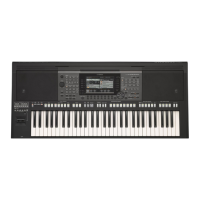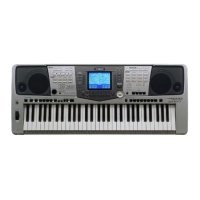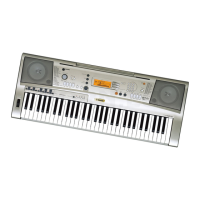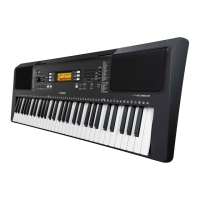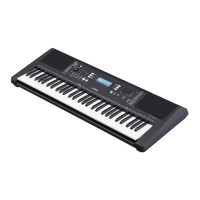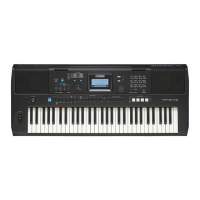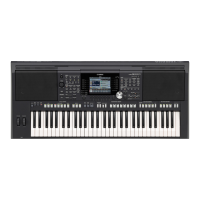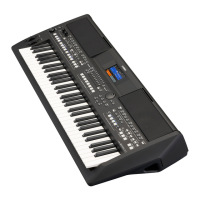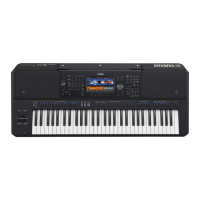PSR-A5000 Reference Manual 31
1
Styles
NTR/NTT
(Note Transpo-
sition Rule/
Note Transpo-
sition Table)
NTR/NTT Settings for the Rhythm Channels
Since the Rhythm channels should not be affected by Chord change, be sure to make the following settings.
• NTR = Root Fixed
• NTT = Bypass
• NTT Bass = Off
With the above settings, the “Source Root” and “Source Chord” parameters are changed to “Play Root” and
“Play Chord,” respectively.
High Key/Note
Limit
Adjusts the Octave (pitch range) of the notes converted via the NTT and NTR.
High Key This sets the highest key (upper octave limit) of the note transposition for the
chord root change. A root note of a selected chord is transposed up as long as the
root note is equal to or less than the highest key. When the root note is higher than
the highest key, the root note is transposed down. This setting is available only
when the NTR parameter (page 29) is set to “Root Trans.”
Note Limit Low These set the pitch range (highest and lowest notes) to transpose. By judicious set-
ting of this range, you can ensure that natural pitch ranges result for each Voice set
on each channel.—in other words, this prevents unnatural pitched notes for each
Voice that is played (e.g., high bass sounds or low piccolo sounds).
Note Limit High
RTR (Retrigger
Rule)
These settings determine how to control sounding notes to change their pitches to adapt to chord changes.
Stop The notes stop sounding.
Pitch Shift The pitch of the note bends without a new attack to match the new chord.
Pitch Shift to Root The pitch of the note bends without a new attack to the root pitch of the new
chord. The octave of the new pitch remains the same.
Retrigger The note of the new pitch corresponding to the new chord is retriggered with a
new attack.
Retrigger To Root The note of the new pitch corresponding to the root of the new chord is retriggered
with a new attack. The octave of the new note remains the same.
The edited Style will be lost if you change to another Style or turn off the power to the instrument without carrying out the Save operation (step 7
on page 21).
Example—When the highest key is F
Root changes
Notes played
Example—When the lowest note is C3 and the highest is D4
Root changes
Notes played
High Limit
Low Limit
Every note is transposed automatically to fit into the range.

